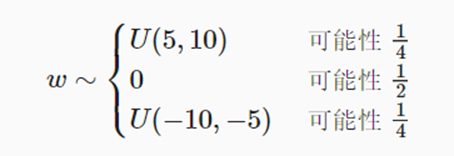提示:文章写完后,目录可以自动生成,如何生成可参考右边的帮助文档
一、层和块
net = nn.Sequential(nn.Linear(20, 256), nn.ReLU(), nn.Linear(256, 10))
自定义块
class MLP(nn.Module):
# 用模型参数声明层。这里,我们声明两个全连接的层
def __init__(self):
# 调用MLP的父类Module的构造函数来执行必要的初始化。
# 这样,在类实例化时也可以指定其他函数参数,例如模型参数params(稍后将介绍)
super().__init__()
self.hidden = nn.Linear(20, 256) # 隐藏层
self.out = nn.Linear(256, 10) # 输出层
# 定义模型的前向传播,即如何根据输入X返回所需的模型输出
def forward(self, X):
# 注意,这里我们使用ReLU的函数版本,其在nn.functional模块中定义。
return self.out(F.relu(self.hidden(X)))
net = MLP()
net(X)
顺序块
class MySequential(nn.Module):
def __init__(self, *args):
super().__init__()
for idx, module in enumerate(args):
# 这里,module是Module子类的一个实例。我们把它保存在'Module'类的成员
# 变量_modules中。module的类型是OrderedDict
self._modules[str(idx)] = module
def forward(self, X):
# OrderedDict保证了按照成员添加的顺序遍历它们
for block in self._modules.values():
X = block(X)
return X
net = MySequential(nn.Linear(20, 256), nn.ReLU(), nn.Linear(256, 10))
net(X)
在前向传播函数中执行代码
```swift
class FixedHiddenMLP(nn.Module):
def __init__(self):
super().__init__()
# 不计算梯度的随机权重参数。因此其在训练期间保持不变
self.rand_weight = torch.rand((20, 20), requires_grad=False)
self.linear = nn.Linear(20, 20)
def forward(self, X):
X = self.linear(X)
# 使用创建的常量参数以及relu和mm函数
X = F.relu(torch.mm(X, self.rand_weight) + 1)
# 复用全连接层。这相当于两个全连接层共享参数
X = self.linear(X)
# 控制流
while X.abs().sum() > 1:
X /= 2
return X.sum()
```python
class NestMLP(nn.Module):
def __init__(self):
super().__init__()
self.net = nn.Sequential(nn.Linear(20, 64), nn.ReLU(),
nn.Linear(64, 32), nn.ReLU())
self.linear = nn.Linear(32, 16)
def forward(self, X):
return self.linear(self.net(X))
chimera = nn.Sequential(NestMLP(), nn.Linear(16, 20), FixedHiddenMLP())
chimera(X)
二、参数管理
参数访问
print(net[2].state_dict())
OrderedDict([(‘weight’, tensor([[ 0.0743, 0.1876, 0.0571, 0.3447, 0.3483, -0.2867, 0.3273, -0.1527]])), (‘bias’, tensor([0.1162]))])
目标参数
print(type(net[2].bias))
print(net[2].bias)
print(net[2].bias.data)
#<class 'torch.nn.parameter.Parameter'>
#Parameter containing:
#tensor([0.1162], requires_grad=True)
#tensor([0.1162])
一次性访问所有参数
print(*[(name, param.shape) for name, param in net[0].named_parameters()])
print(*[(name, param.shape) for name, param in net.named_parameters()])
#('weight', torch.Size([8, 4])) ('bias', torch.Size([8]))
#('0.weight', torch.Size([8, 4])) ('0.bias', torch.Size([8])) #('2.weight', torch.Size([1, 8])) ('2.bias', torch.Size([1]))
net.state_dict()['2.bias'].data
从嵌套块收集参数
def block1():
return nn.Sequential(nn.Linear(4, 8), nn.ReLU(),
nn.Linear(8, 4), nn.ReLU())
def block2():
net = nn.Sequential()
for i in range(4):
# 在这里嵌套
net.add_module(f'block {i}', block1())
return net
rgnet = nn.Sequential(block2(), nn.Linear(4, 1))
rgnet(X)
rgnet[0][1][0].bias.data#访问第一个主要的块中、第二个子块的第一层的偏置项。
参数初始化
def init_normal(m):
if type(m) == nn.Linear:
nn.init.normal_(m.weight, mean=0, std=0.01)
# nn.init.constant_(m.weight, 1)
#nn.init.xavier_uniform_(m.weight)
nn.init.zeros_(m.bias)
net.apply(init_normal)
net[0].weight.data[0], net[0].bias.data[0]
自定义初始化
def my_init(m):
if type(m) == nn.Linear:
print("Init", *[(name, param.shape)
for name, param in m.named_parameters()][0])
nn.init.uniform_(m.weight, -10, 10)
m.weight.data *= m.weight.data.abs() >= 5

参数绑定
有时我们希望在多个层间共享参数: 我们可以定义一个稠密层,然后使用它的参数来设置另一个层的参数
shared = nn.Linear(8, 8)
net = nn.Sequential(nn.Linear(4, 8), nn.ReLU(),
shared, nn.ReLU(),
shared, nn.ReLU(),
nn.Linear(8, 1))
#第二层和第四层绑定
共享参数通常可以节省内存,并在以下方面具有特定的好处:
• 对于图像识别中的CNN,共享参数使网络能够在图像中的任何地方而不是仅在某个区域中查找给定的功能。
• 对于RNN,它在序列的各个时间步之间共享参数,因此可以很好地推广到不同序列长度的示例。
• 对于自动编码器,编码器和解码器共享参数。 在具有线性激活的单层自动编码器中,共享权重会在权重矩阵的不同隐藏层之间强制正交。
自定义层
class MyLinear(nn.Module):
def __init__(self, in_units, units):
super().__init__()
self.weight = nn.Parameter(torch.randn(in_units, units))
self.bias = nn.Parameter(torch.randn(units,))
def forward(self, X):
linear = torch.matmul(X, self.weight.data) + self.bias.data
return F.relu(linear)
读写模型文件
x = torch.arange(4)
torch.save(x, 'x-file')
torch.load("x-file")
net = MLP()
X = torch.randn(size=(2, 20))
Y = net(X)
#保存参数
torch.save(net.state_dict(),'mlp.params')
#读取参数
clone=MLP()
clone.load_state_dict(torch.load('mlp.params'))
GPU
在gpu运行
X = torch.ones(2, 3, device=d2l.try_gpu())
net = nn.Sequential(nn.Linear(3, 1))
net = net.to(device=d2l.try_gpu())





















 3035
3035











 被折叠的 条评论
为什么被折叠?
被折叠的 条评论
为什么被折叠?








